
Whether you want to buy your first and one of the Best Sony Cameras or it’s time for an upgrade, we have compiled this list of the best Sony cameras to help you choose the right one – regardless of your budget or skill level. Since the company came out of the conventional DSLR market a few years ago, the company has boosted its range of mirrorless (compact system camera) bodies, along with their associated E-mount interchangeable lenses.
These Alpha cameras are available with APS-C and full-frame sensors, the latter designed as mini DSLRs, with a conventionally placed electronic viewfinder. There are A9 options with the very best specifications and extensive A7 options to choose from, and they are suitable for everyone from photographers for weddings, portraits, landscapes and architecture to sports and other shooting actions. Let us take a look at the best Sony Cameras in our comparison table, and then we will discuss them thoroughly, one by one.
Best Sony Cameras Comparison Table
Best Sony Cameras
Camera Name
Megapixels
Max Video Resolution
Sony A7 III
24.2MP
4K
Sony A9
24.2MP
4K
Sony A6000
24.3MP
1080p
Sony A7R III
42.4MP
4K
Sony A99 II
42.2MP
4K
Sony A6500
24.2MP
4K
Sony RX100 IV
20.1MP
4K
Sony HX90V
18.2MP
1080p
Sony HX400V
20.4MP
1080p
Sony RX0
15.3MP
4K
Sony A7 III
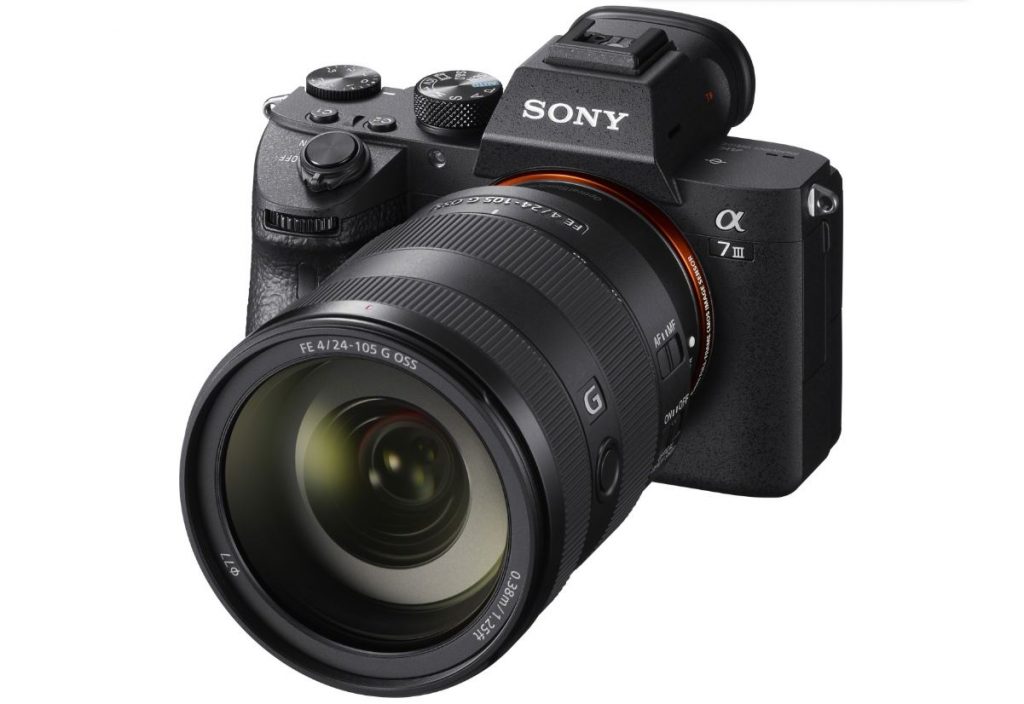
- Type: Mirrorless
- Sensor: Full frame
- Megapixels: 24.2MP
- Lens mount: Sony E
- Screen: 3in tilting touchscreen, 922k dots
- Viewfinder: EVF, 2,359k dots
- Max burst speed: 10fps
- Max video resolution: 4K
- User level: Enthusiast
It may not have the glamor of Sony’s A9 top flight and A7R III with ultra-high resolution, but the A7 III camera captures most of the best pieces of both more expensive models and delivers them in a more affordable package. The main functions include an extremely effective 696-point AF system and a 5-axis image stabilization system that promises to compensate 5EV. There is a new back-illuminated image sensor of 24.2 MP, coupled with the latest generation image processor, and the two provide an amazing range of tones and enable super-high ISO settings. The operation is excellent, with a design that combines easy access to key camera settings with a typical compact and lightweight Alpha build. For the top performance at a reasonable price, it is one of the best Sony cameras out there.
Pros:
- Stunning full-frame image quality
- 5-axis image stabilization
Cons:
- Weather-seals could be better
- Touchscreen needs improvement
Sony A9
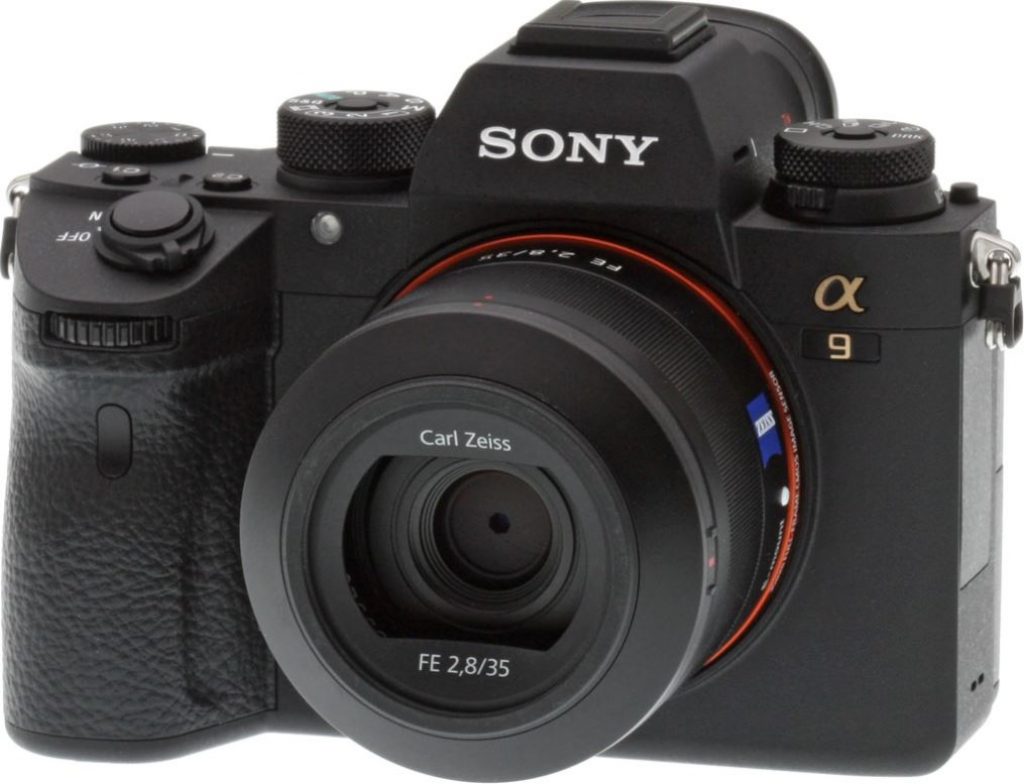
- Type: Mirrorless
- Sensor: Full frame
- Megapixels: 24.2MP
- Lens mount: Sony E
- Screen: 3in tilting touchscreen, 1,440k dots
- Viewfinder: EVF, 3,686k dots
- Max burst speed: 20fps
- Max video resolution: 4K
- User level: Professional
If there ever was a camera to prove that you can get professional performance and image quality without the need for a reflex mirror, this is it. The flagship of Sony A9, has the same number of megapixels as the A7 III, but it has an electronic viewfinder with higher resolution and a tiltable touchscreen, both are beauties. The A9 is not only a fantastic all-rounder, but it is also a sporty camera, but the stacked sensor design also provides a sizzling continuous speed of 20 fps, while a cavernous memory buffer can take up to 241 unedited recordings. The only real minus is that the camera costs twice the price of the (also excellent) A7 III. But doesn’t stops making it one of the best Sony cameras out there in the market.
Pros:
- Superb all-around performance
- Excellent high-res EVF
Cons:
- Very expensive
- Unbalanced with larger lenses
Sony A6000
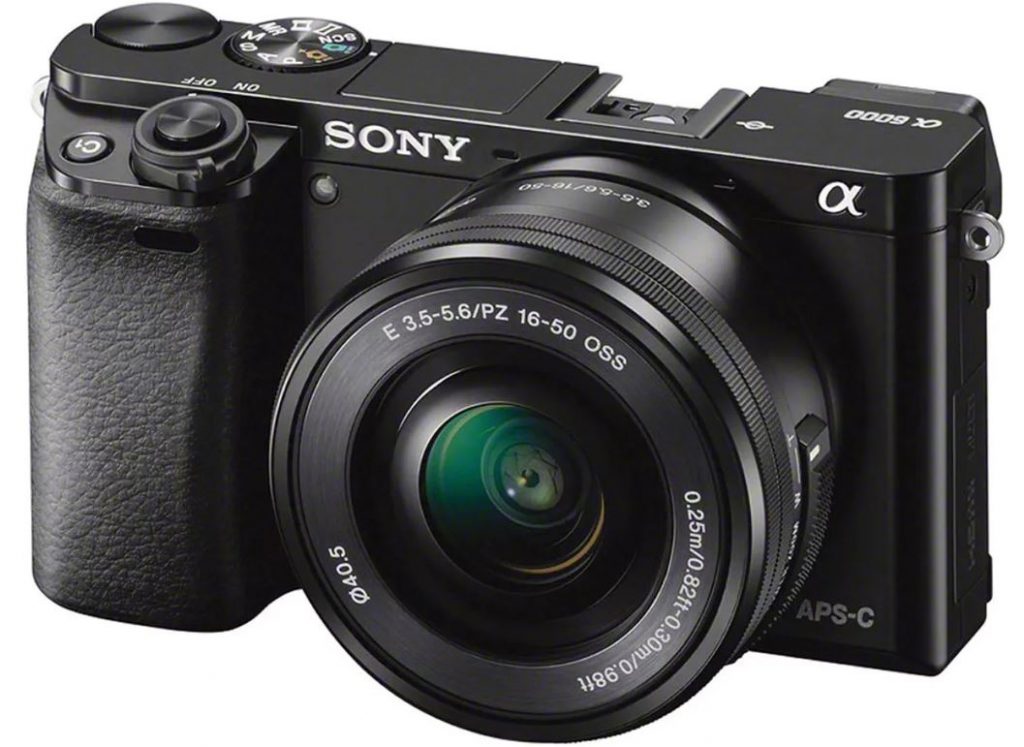
- Type: Mirrorless
- Sensor: APS-C
- Megapixels: 24.3MP
- Lens mount: Sony E
- Screen: 3in tilting screen, 921k dots
- Viewfinder: EVF, 1,440k dots
- Max burst speed: 11fps
- Max video resolution: 1080p
- User level: Beginner/enthusiast
Although it is now more than four years old, the A6000 is still one of the best Sony cameras on the market. In addition, the newer A6300 and A6500 models are significantly undercut for the price. Indeed, it is currently no more than a third of the price of the A6500. Thanks to the compact camera style of the APS-C format and the access to Sony’s interchangeable lenses, it is a small body that draws a lot of power. The resolution is good in every area, from the 24.3 MP image sensor to the 1,440k dot electronic viewfinder and the 921K point tilting screen. It lacks the ability to record 4K movies, but the overall performance and image quality are very impressive, and it is also a great value for money.
Pros:
- Small and lightweight build
- Great electronic viewfinder
Cons:
- No 4K video
- Relatively old model
Sony A7R III
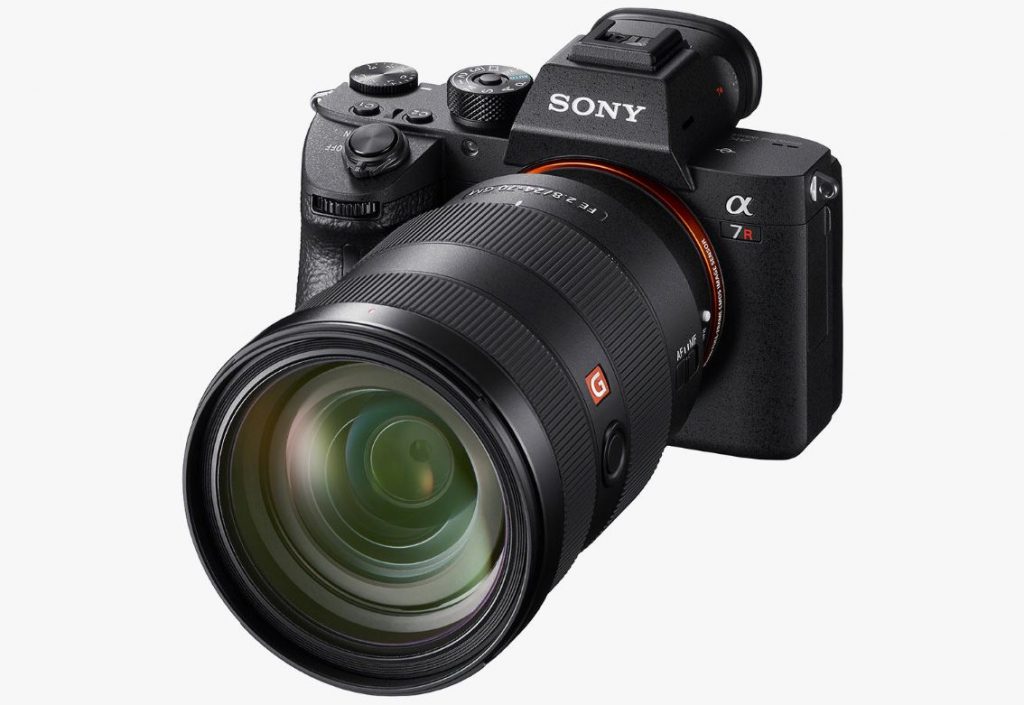
- Type: Mirrorless
- Sensor: Full-frame
- Megapixels: 42.4MP
- Lens mount: Sony E
- Screen: 3in tilting touchscreen, 1,440k dots
- Viewfinder: EVF, 3,686k dots
- Max Burst speed: 10fps
- Max video resolution: 4K
- User level: Enthusiast/Professional
There are many reasons why this camera is one of the best Sony cameras. With the ultra-high megapixel count, you can capture the smallest details and the best texture in images, making the A7R III excellent for everything from architectural and landscape photography to high-quality portrait photography and fashion photography. Even the image by the electronic viewfinder is wonderfully detailed because the camera has the same EVF as the A9 with range glazing. Some of the image sensor technology indeed comes from the A9. Highly effective 5-axis image stabilization helps you maintain the ultimate sharpness when shooting in your hand, and the camera also does not fall silent, with fast responsive autofocus and a fast 10fps maximum driving speed. However, it is pricey to buy, with a body price that is about 50 percent more expensive than the A7 III with a lower resolution.
Pros:
- 42.4MP image sensor
- 10fps continuous shooting
Cons:
- Narrower ISO range than the A7 III
- Expensive
Sony A99 II
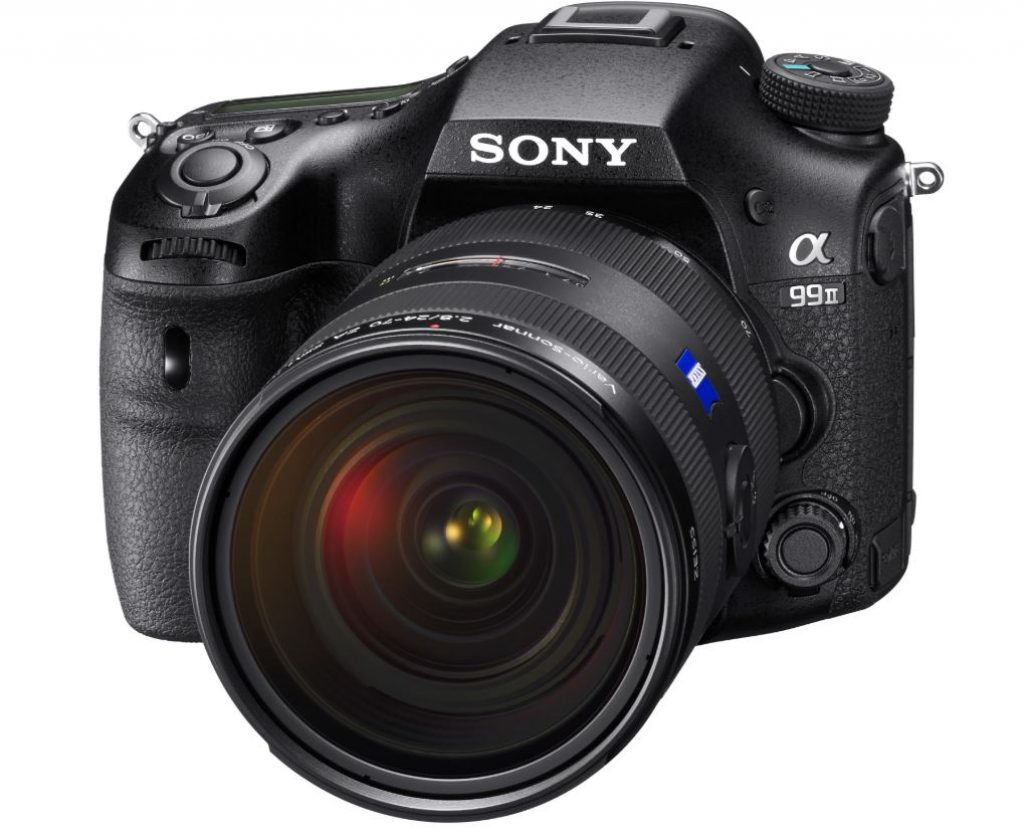
- Type: SLT
- Sensor: Full-frame
- Megapixels: 42.4MP
- Lens mount: Sony A
- Screen: 3in tilting screen, 1,229k dots
- Viewfinder: EVF, 2,359k dots
- Max burst speed: 12fps
- Max video resolution: 4K
- User level: Enthusiast/Professional
Something that is a holy grail for action sports and wildlife photography, the A99 II combines a super-high 42.4MP sensor with a fast 12fps continuous driving speed. This allows you to capture the decisive moment in an unfolding scene and in the greatest possible detail. Although it may not be as attractive as its newer, mirrorless cousins, the larger SLT design (Single Lens Translucent) at least provides a better balance with large telephoto lenses. The build quality is very solid and the all-round performance is excellent, but because the mirror is fixed and allows continuous input to the autofocus system, it is surprising that AF tracking for irregularly moving objects is not better than with some of the leading DSLRs, such as the Canon EOS-1D X Mark II and Nikon D5.
Pros:
- 42.4MP with fast 12fps drive rate
- Large build suits telephoto lenses
Cons:
- AF tracking could be better
- No touchscreen
Sony A6500
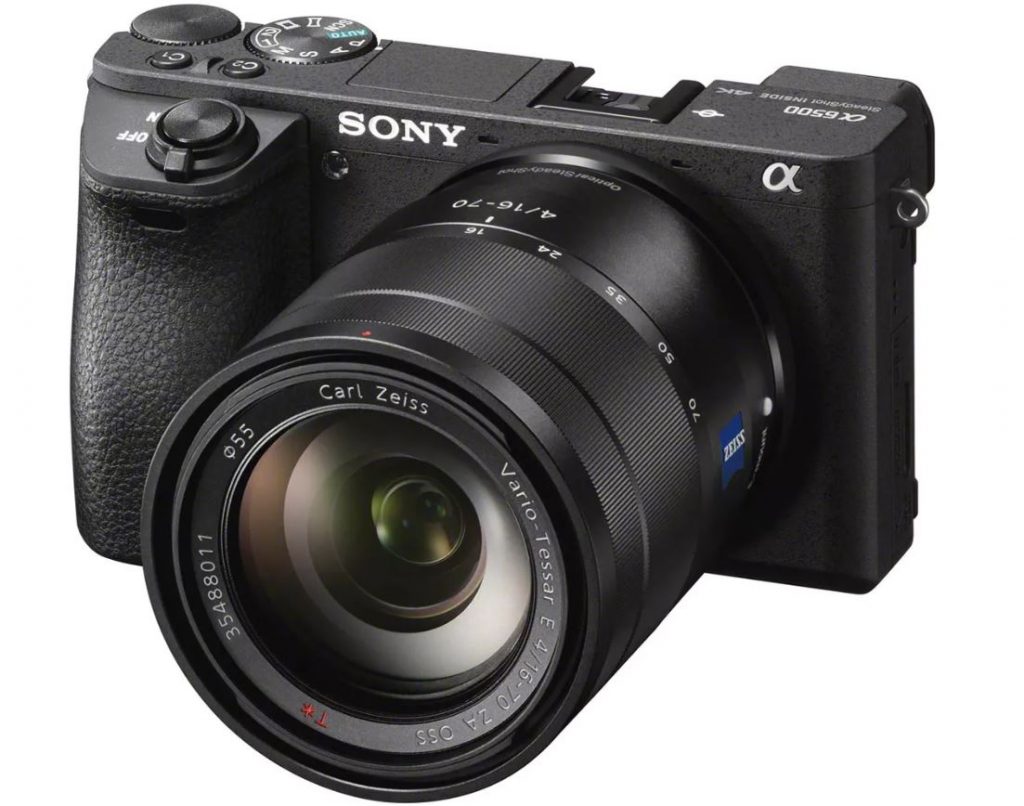
- Type: Mirrorless
- Sensor: APS-C
- Megapixels: 24.2MP
- Lens mount: Sony E
- Screen: 3in tilting touchscreen, 922k dots
- Viewfinder: EVF, 2,359k dots
- Max burst speed: 11fps
- Max video resolution: 4K
- User level: Enthusiast
The flagship model in Sony’s APS-C line-up of compact system cameras with interchangeable lenses, the A6500 is one of the best Sony cameras. Despite the compact, light construction, the operation is excellent, with comfortable, ergonomic grip areas. The operation is further enhanced by the excellent electronic viewfinder and the high-resolution tilting touchscreen. A crucial upgrade over previous cameras in the A6xxx stable is sensor-shift image stabilization, a powerful 5-axis system. This allows you to take sharp shots of your hand during your travels, even indoors or at dusk, without having to carry a tripod around. Further attractions include a fast rhythm of 11 fps for photos and 4K recordings for films.
Top 10 Best Cameras For Beginners
Pros:
- 4K video and fast 11fps stills
- Sensor-shift stabilization
Cons:
- Much pricier than the old A6000
- Awkward handling with big lenses
Sony RX100 IV
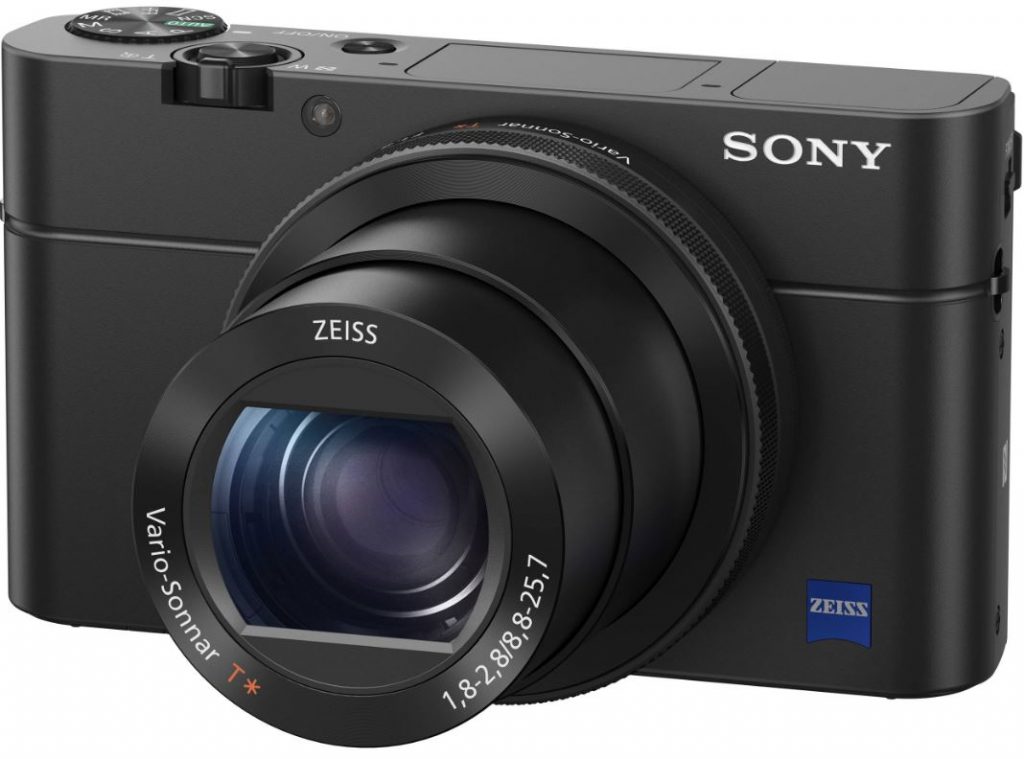
- Type: Compact
- Sensor: 1in type
- Megapixels: 20.1MP
- Lens: 24-70mm (equiv) f/1.8-2.8
- Screen: 3in tilting screen, 1,229k dots
- Viewfinder: EVF, 2,359k dots
- Max burst speed: 16fps
- Max video resolution: 4K
- User level: Enthusiast
Sometimes even a compact system camera can feel a bit on the bulky side. The RX100 Mark IV is a sleek and streamlined camera from Sony’s famous line of premium compact cameras with a permanently fixed lens. It aims for the highest levels of image quality, using a 1in-type image sensor that is relatively large for a compact camera, which has a respectable 20.1MP sensor resolution. There are two newer versions of the RX100, the most striking being the RX100 VI, which increases the effective focal range from 24-70 mm to 24-200 mm, in 35 mm terms. For our money, however, the RX100 IV gives the best overall price-performance ratio when you are talking about the best Sony cameras.
Pros:
- Relatively large sensor for a compact
- High-resolution EVF
Cons:
- No touchscreen
- Pricey
Sony HX90V

- Type: Compact
- Sensor: 1/2.3in type
- Megapixels: 18.2MP
- Lens: 24-720mm (equiv) f/3.5-6.4
- Screen: 3in tilting screen, 922k dots
- Viewfinder: EVF, 638k dots
- Max Burst speed: 10fps
- Max video resolution: 1080p
- User level: Beginner
Despite being small enough to fit in a spare compartment, the sleek HX90V compact camera features an 18.2 MP image sensor, a pop-up viewfinder, a 3-inch screen that tilts and a powerful optical zoom range that is equivalent to 24 -720 mm with a full-screen frame camera. There is also a 5-axis image stabilizer at hand, which helps to keep things stable, especially at the long end of the powerful zoom range. The Wi-Fi and NFC connectivity are also installed on the camera and the version ‘V’ contains built-in GPS for geo-tagging your images. As an extra bonus, the screen has a self-friendly 180-degree tilting mechanism, which ultimately makes it one of the best Sony cameras for the traveling photographer who occasionally wants to put himself in the frame.
Pros:
- Huge 30x zoom range
- Built-in GPS for geotagging
Cons:
- No 4K video
- No touchscreen
Sony HX400V
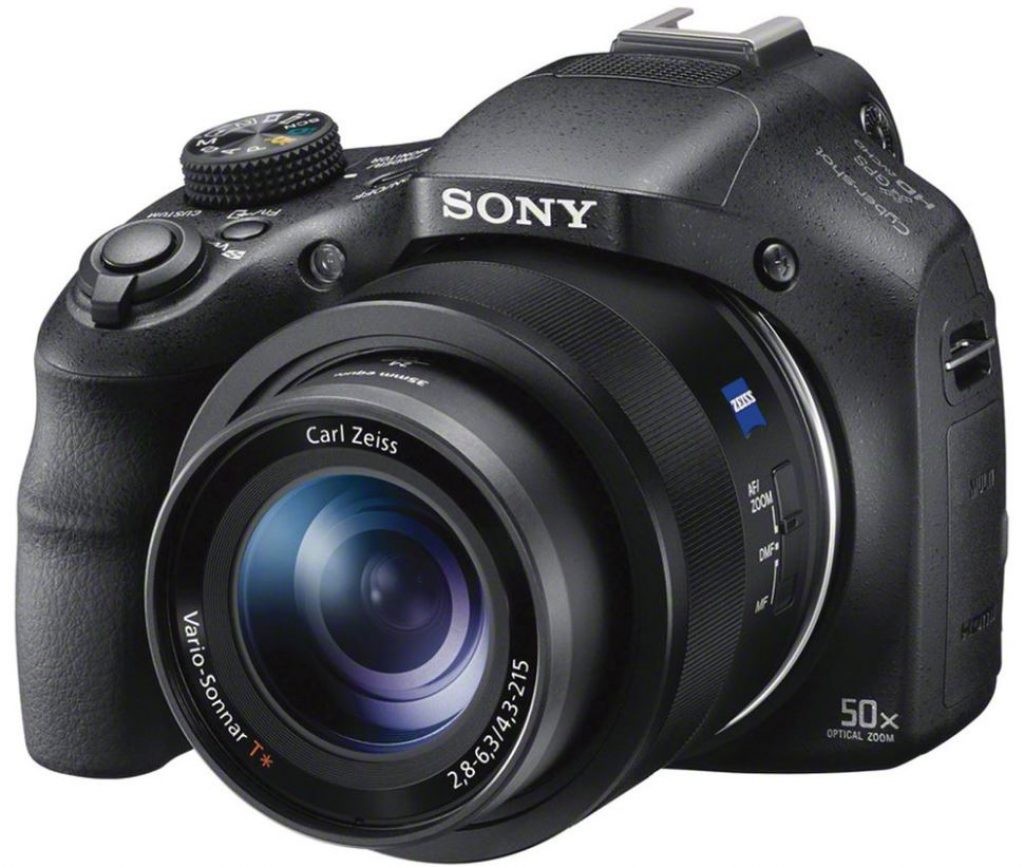
- Type: Compact
- Sensor: 1/2.3in type
- Megapixels: 20.4MP
- Lens: 24-500mm (equiv) f/2.8-6.3
- Screen: 3in tilting screen, 922k dots
- Viewfinder: EVF, 201k dots
- Max burst speed: 10fps
- Max video resolution: 1080p
- User level: Beginner
A large zoom range sometimes seems difficult to handle when it is crammed into a small compact camera. The bridge cameras from Sony take their style characteristics from the company’s now retired SLR cameras and have a larger surface for more natural use. The RX10 series of cameras is undeniably excellent, but recent editions are very expensive to buy. The smart money is on the relatively inexpensive HX400V, which delivers very good performance and image quality at a much more attractive price. Highlights are a monstrous 50x zoom range, equivalent to 25-500 mm in full frame terms and a fast 10 fps continuous driving speed. A disadvantage for some, however, is that the maximum video resolution is 1080p instead of 4K.
Pros:
- Huge focal range
- 10fps continuous drive mode
Cons:
- Low-resolution EVF
- No touchscreen or 4K video
Sony RX0
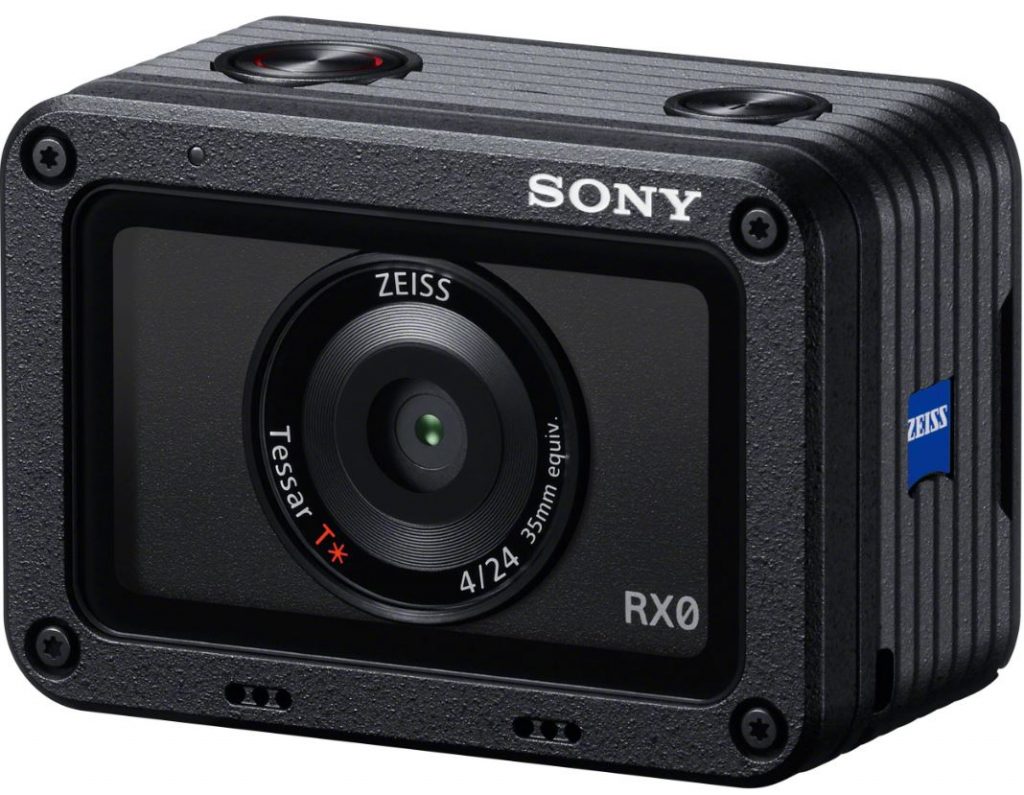
- Type: Action camera
- Sensor: 1in type
- Megapixels: 15.3MP
- Lens: 24mm (equiv) f/4
- Screen: 1.5in screen, 230k dots
- Viewfinder: None
- Max Burst speed: 16fps
- Max video resolution: 4K
- User level: Beginner
The words ‘action camera’ has become almost synonymous with GoPro, but this new Sony wants to restore the balance. The Sony RX0 is waterproof up to 10 m (100 m with the optional waterproof housing), shock resistant up to 2 m and resistant to loads up to 200 kg. Strikingly compact and light in just 60x41x30mm and 110g, it’s a camera that you can take anywhere. Although physically small, it becomes large in image quality with a ZEISS 24 mm lens and a relatively large 1-inch image sensor. Photographing with 15 megapixels is available with a fast 16 fps and you can record video at 4K, or take advantage of 960 fps super-slow-mo. Bring the action!
Pros:
- Robust but very compact build
- Relatively large 1in sensor
Cons:
- No optical zoom or viewfinder
- Costly
Conclusion
Sony supplies many cameras, varying from professional to ordinary shooters, and the functions and hardware that go into them are even more varied. Keeping track of everything is no easy task, with many different product lines and even multiple varieties of individual product lines, such as the R-label that can be seen on many of Sony’s best cameras. Above, we have mentioned 10 of the Best Sony Cameras that you can buy right now.
